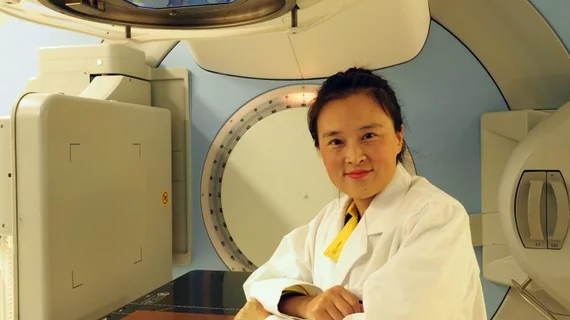X-ray-triggered 'nano-bubbles' release chemotherapy drugs on demand
Chemotherapy drug-filled "nano-bubbles," or liposomes, engineered by researchers that can be triggered by x-ray may be effective for cancer treatment.
The liposomes can deliver chemotherapy drugs on-demand when activated by x-rays and have proven successful in killing bowel cancer cells, according to a news release from the Centre for Nanoscale BioPhotonics in Adelaide, Australia.
“Made out of similar material as cell membranes, these ‘bubbles’ are relatively simple to prepare, can be filled with appropriate medications and then injected into specific parts of the body," said lead author of the study Wei Deng, PhD, an associate investigator at the ARC Centre of Excellence for Nanoscale BioPhotonics (CNBP) and scientist at Macquarie University, in a prepared statement. "The issue however, is in controlling the timely release of the drug from the liposome."
Deng explained that one solution is to trigger the collapse of the liposome with x-rays. For their study, Deng and colleagues embedded gold nanoparticles and the molecule verteporfin into the wall of the liposomes. The radiation from the x-ray causes verteporfin to produce singlet oxygen that stabilizes the liposomal membrane and causes the release of the drug, according to Deng.
“The gold nanoparticles are added into the mix as they focus the x-ray energy. This enhances the singlet oxygen generation and hence improves the speed of the membrane breakup,” Deng said.
The x-ray-triggered liposomes, loaded with the chemotherapy drug doxorubicin, proved to be effective against bowel tumor cells, which shrunk over the two-week study.
“Currently radiotherapy where x-rays kill cancer cells, and chemotherapy, are typically given to patients separately,” said senior researcher on the project Ewa Goldys, PhD, deputy director of the CNBP, in a prepared statement. “Our method makes it possible to perfectly synchronize both treatments, so they can be given simultaneously. This enables enhanced therapeutic outcomes with potentially reduced doses of drug and/or radiation required because of this exquisitely precise timing of drug release.”

